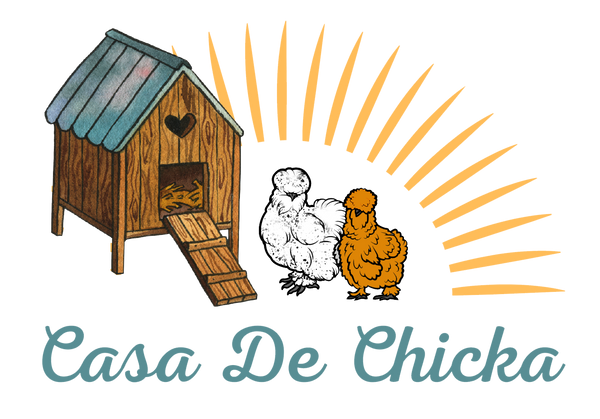Hello, fellow poultry pals! So, you've decided to take the plunge and start your very own backyard flock - how egg-citing! But before you start counting your chickens before they hatch, it's important to consider the financial aspect of raising these feathered friends. Fear not, for today, we shall delve into the nitty-gritty of chicken-related expenses, providing you with a comprehensive guide to the costs associated with raising a backyard flock and tips for budgeting like a true poultry pro. Let's cluck our way to a fiscally responsible chicken-keeping adventure!
Part 1: The Chicken and the Egg: Initial Costs
The Birds Themselves
One of the first expenses you'll encounter is the cost of acquiring your chickens. This can vary widely depending on factors such as breed, age, and where you purchase them. Chicks can generally be purchased for a few dollars each, while adult birds or rare breeds may cost anywhere from $10 to $50 or more per bird. Be sure to factor in the cost of shipping if you're ordering birds online.
Coop and Run Construction
Your chickens will need a safe, secure, and comfortable home. Building or purchasing a coop and run can be one of the more significant upfront costs associated with raising chickens. Depending on the size, materials, and complexity of the design, a chicken coop can range from $100 for a simple DIY project to well over $1,000 for a more elaborate, pre-built structure.
Feeders and Waterers
Proper feeders and waterers are essential for maintaining a healthy flock. While these can be relatively inexpensive (starting at around $10 each for basic models), it's worth investing in durable, high-quality options that will withstand the test of time and weather.
Bedding
Your chickens will need clean, dry bedding to keep their coop fresh and sanitary. Common bedding options include pine shavings, straw, or sand, with costs varying depending on the type and quantity required.
Heat Source (for Chicks)
If you're starting with chicks, you'll need a heat source to keep them warm and cozy during their first few weeks of life. Heat lamps or brooder plates can cost anywhere from $20 to $60 or more, depending on the type and quality.
Part 2: Ongoing Expenses
Feed
Feed will be your most significant ongoing expense when raising chickens. The cost of feed can vary depending on factors such as brand, type, and where you purchase it. On average, a 50-pound bag of layer feed costs around $15 to $25. Keep in mind that the number of birds in your flock and their age will dictate how much feed you'll need.
Supplements and Treats
In addition to their regular feed, you may choose to provide your chickens with supplements (such as grit or calcium) and treats (like mealworms or scratch grains). These items can add to your ongoing costs but are generally relatively inexpensive.
Health Care
Occasionally, your chickens may require medical care or preventative treatments, such as deworming or vaccinations. While these costs are generally minimal, it's essential to factor them into your budget and be prepared for unexpected veterinary expenses.
Bedding Replacement
Depending on the type of bedding you use and how often you clean and replace it, this can be another ongoing expense to consider. Be sure to factor in the cost of bedding replacement when planning your chicken-keeping budget.
Miscellaneous Expenses
Other miscellaneous expenses can include coop maintenance, predator protection measures, and replacing or upgrading equipment as needed. These costs can vary but should be accounted for in your budget.
Part 3: Budgeting Tips and Tricks
Do Your Research
Before diving into chicken-keeping, take the time to research the costs associated with raising a backyard flock. Speak with other chicken keepers, visit local feed stores, and consult online resources to get an accurate idea of the expenses you can expect.
Start Small
If you're new to chicken-keeping or working with a limited budget, consider starting with a small flock. Fewer birds mean lower initial and ongoing costs, allowing you to ease into the world of backyard poultry without breaking the bank.
DIY Where Possible
Save money by building your own chicken coop, creating homemade feeders and waterers, or even mixing your own chicken feed. There are plenty of resources available online to guide you through these DIY projects, helping you cut costs without sacrificing quality or functionality.
Buy in Bulk
Purchasing items such as feed, bedding, and supplements in bulk can lead to significant savings over time. Look for deals at your local feed store or consider joining a local poultry group to take advantage of group discounts.
Keep Track of Expenses
Maintaining a record of your chicken-related expenses can help you better understand the true cost of raising a backyard flock and make informed decisions about future investments. Plus, if you decide to sell eggs or other products from your chickens, tracking expenses can help you determine the appropriate pricing to ensure profitability.
Raising chickens can be an incredibly rewarding experience, providing you with fresh eggs, endless entertainment, and a unique connection to your food source. However, it's essential to understand the costs associated with backyard poultry and plan accordingly to ensure a financially sustainable and enjoyable chicken-keeping adventure. By doing your research, starting small, embracing DIY projects, and keeping a close eye on expenses, you'll be well on your way to becoming a fiscally responsible and savvy chicken keeper. So, go forth and conquer the cluckin' budget, dear poultry pals, and enjoy the bounty and joy that your backyard flock will undoubtedly bring!

